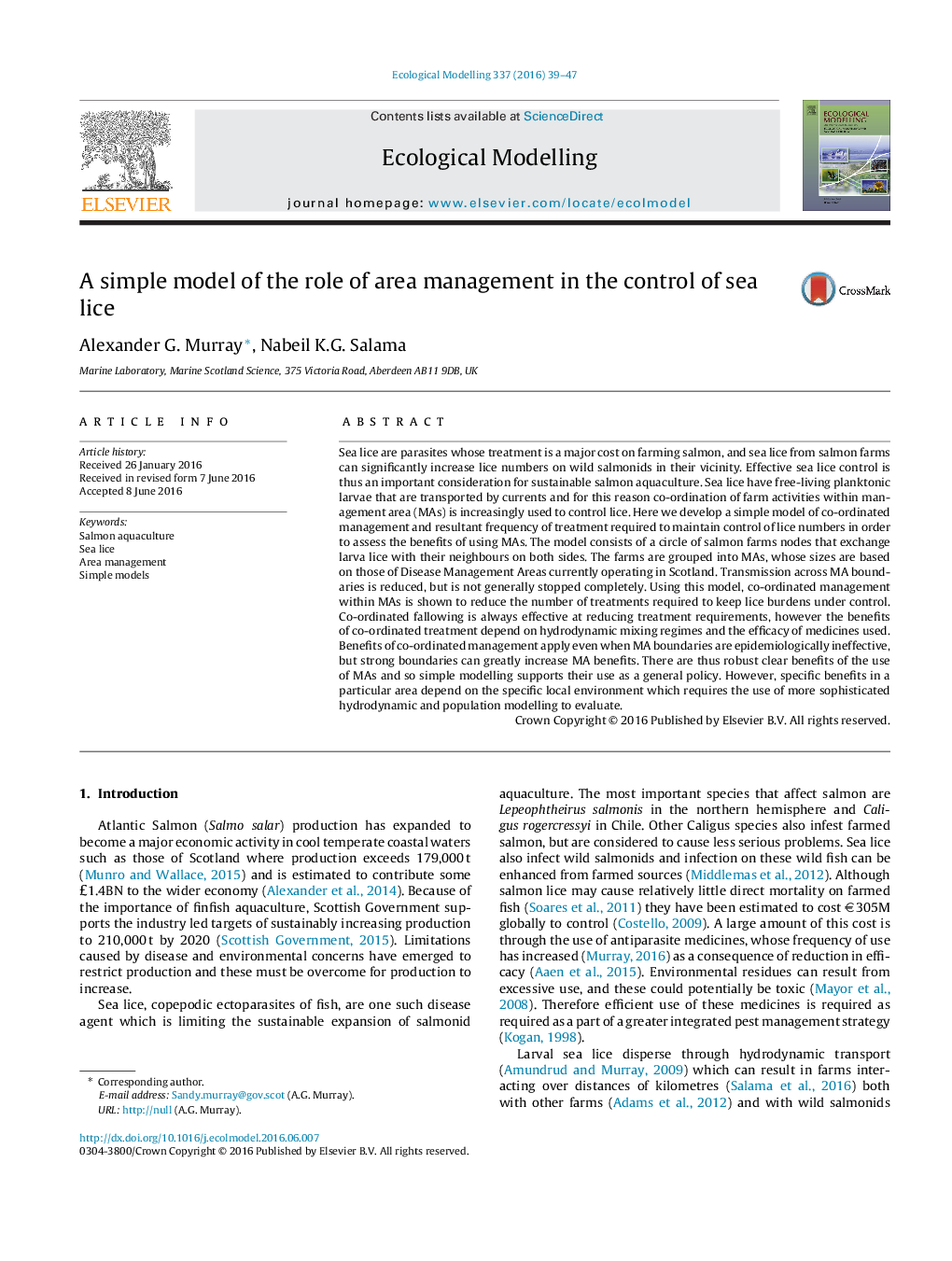| کد مقاله | کد نشریه | سال انتشار | مقاله انگلیسی | نسخه تمام متن |
|---|---|---|---|---|
| 6296048 | 1617410 | 2016 | 9 صفحه PDF | دانلود رایگان |
عنوان انگلیسی مقاله ISI
A simple model of the role of area management in the control of sea lice
ترجمه فارسی عنوان
یک مدل ساده از نقش مدیریت منطقه در کنترل ویتامین های دریایی
دانلود مقاله + سفارش ترجمه
دانلود مقاله ISI انگلیسی
رایگان برای ایرانیان
کلمات کلیدی
پرورش ماهی قزل آلا، شپش دریایی، مدیریت منطقه، مدل های ساده،
موضوعات مرتبط
علوم زیستی و بیوفناوری
علوم کشاورزی و بیولوژیک
بوم شناسی، تکامل، رفتار و سامانه شناسی
چکیده انگلیسی
Sea lice are parasites whose treatment is a major cost on farming salmon, and sea lice from salmon farms can significantly increase lice numbers on wild salmonids in their vicinity. Effective sea lice control is thus an important consideration for sustainable salmon aquaculture. Sea lice have free-living planktonic larvae that are transported by currents and for this reason co-ordination of farm activities within management area (MAs) is increasingly used to control lice. Here we develop a simple model of co-ordinated management and resultant frequency of treatment required to maintain control of lice numbers in order to assess the benefits of using MAs. The model consists of a circle of salmon farms nodes that exchange larva lice with their neighbours on both sides. The farms are grouped into MAs, whose sizes are based on those of Disease Management Areas currently operating in Scotland. Transmission across MA boundaries is reduced, but is not generally stopped completely. Using this model, co-ordinated management within MAs is shown to reduce the number of treatments required to keep lice burdens under control. Co-ordinated fallowing is always effective at reducing treatment requirements, however the benefits of co-ordinated treatment depend on hydrodynamic mixing regimes and the efficacy of medicines used. Benefits of co-ordinated management apply even when MA boundaries are epidemiologically ineffective, but strong boundaries can greatly increase MA benefits. There are thus robust clear benefits of the use of MAs and so simple modelling supports their use as a general policy. However, specific benefits in a particular area depend on the specific local environment which requires the use of more sophisticated hydrodynamic and population modelling to evaluate.
ناشر
Database: Elsevier - ScienceDirect (ساینس دایرکت)
Journal: Ecological Modelling - Volume 337, 10 October 2016, Pages 39-47
Journal: Ecological Modelling - Volume 337, 10 October 2016, Pages 39-47
نویسندگان
Alexander G. Murray, Nabeil K.G. Salama,
